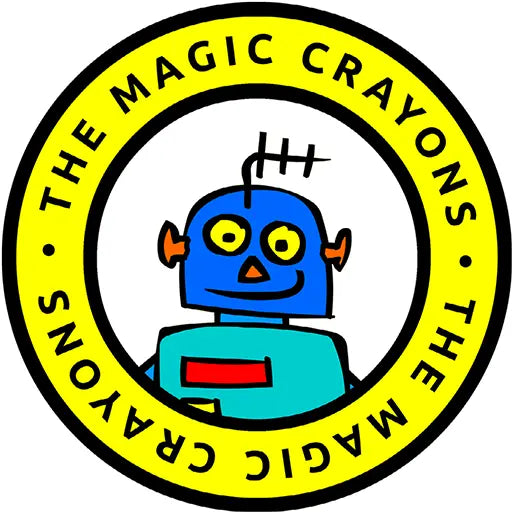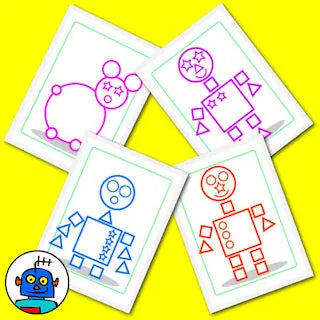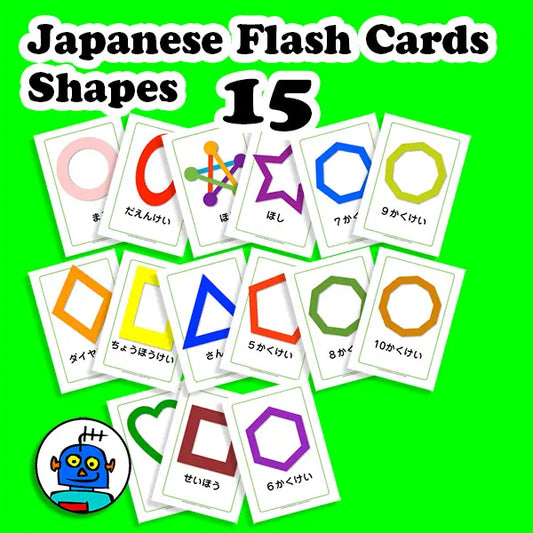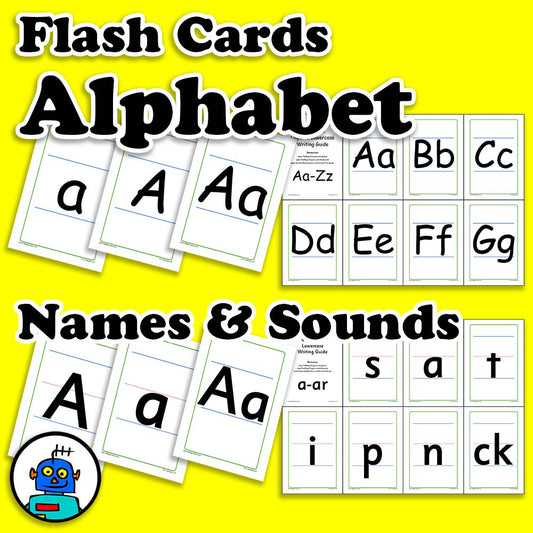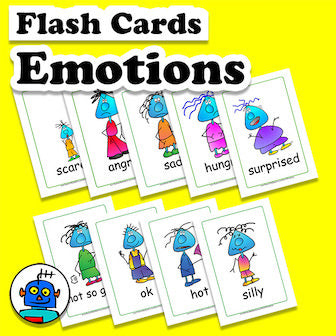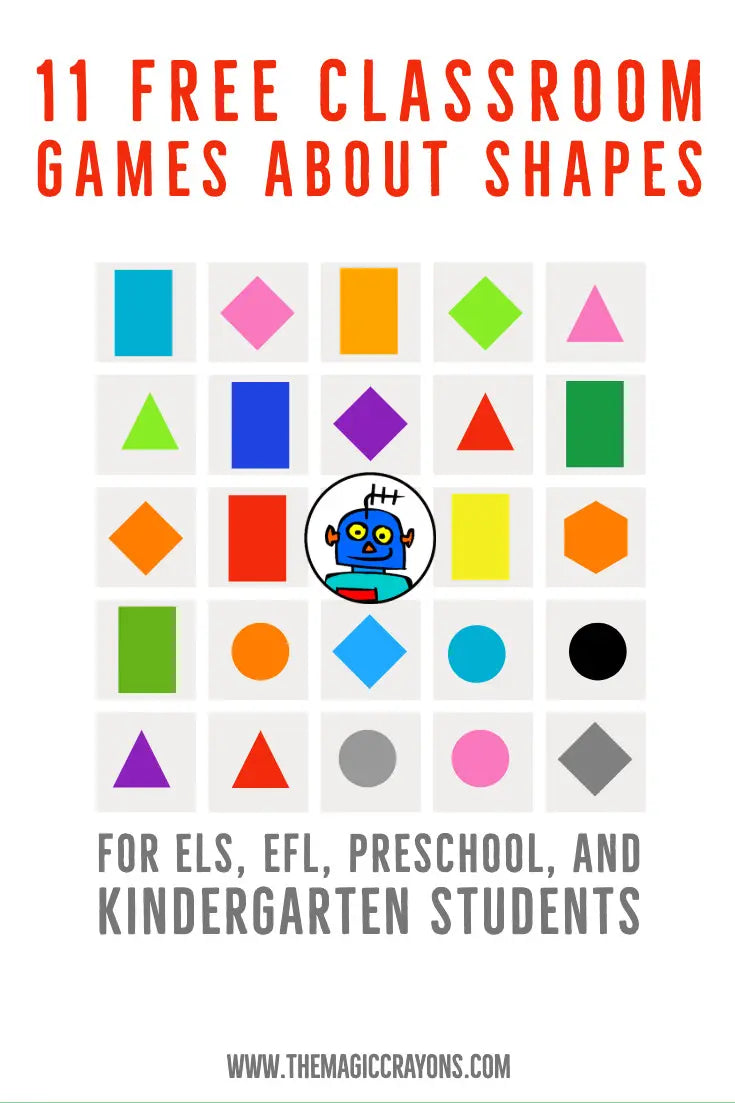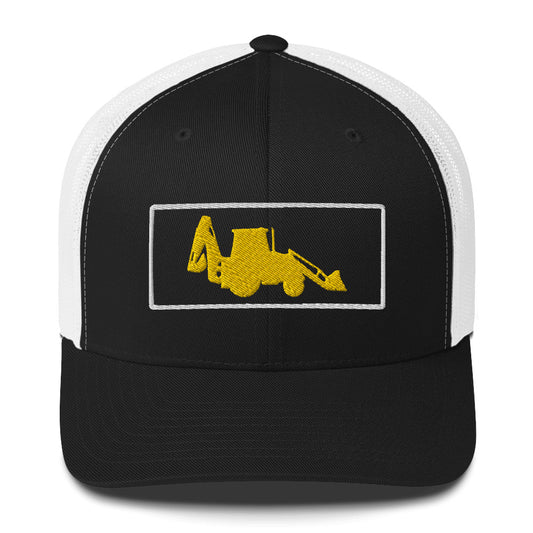>Games >Shapes Games
-
1. Group Shape Making
Resources
How To Play
Time: 10 minutes
Receptive Language: ‘Make a star’Divide the class into a boys and a girls team. Have them sit on opposite side of the room. Shuffle the FC and yell out, “make a star” etc. The teams then have to stand up and, as a group holding hands, try and make the shape you call as best they can. Do a count down from 10 to 1. After time is up give a point to the team that has done the best job of making the shape.
-
2. Magazine Search
Resources
- Old Magazines
-
How To Play
Set up: Divide the class up into teams of 2-5 students. Give each team a magazine. Teacher calls out a shape and students must search through the magazine to find that shape.
The Magic Crayons
Robot Shape Guess Counting Game, Digital Download
Share
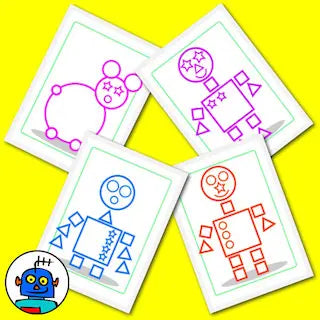
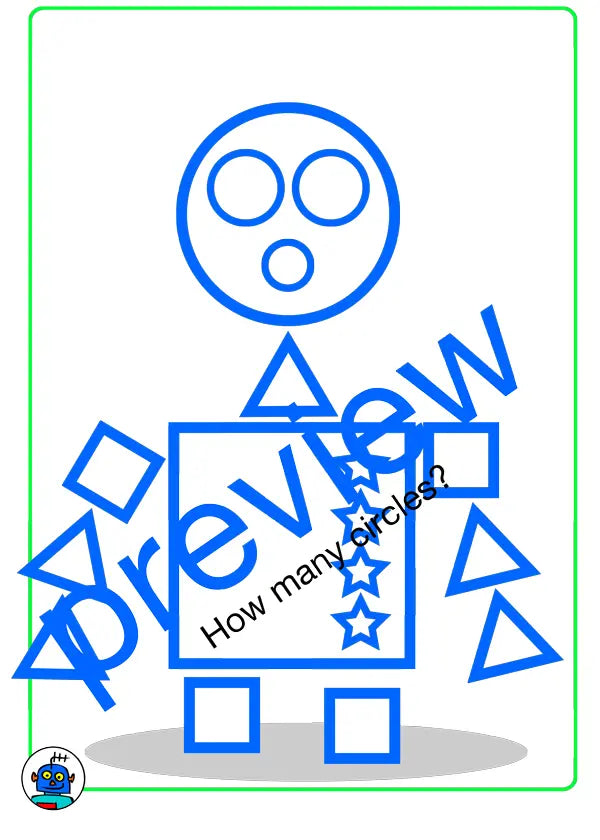
Shape Guess Game
-
How to play
This is a fantastic maths game, for a review or warm up activity. Works great with children ages 4-7. If there are parents in the room try a Students vs Parents battle. The students usually win.
To play
Show the children the robot picture for exactly 2 seconds (or 1 second) and ask how many circles, squares, triangles or stars they saw. Print the preview and try it for yourself. Deceptively challenging yet fun.
ESL / Young Learners Theme- Numeracy
- Counting
- Shapes
The Download- 4 Color Robot Posters - pdfs - print these out as large as you can for the whole class to see.
- Instructions page.
-
In class
Review the four basic shapes - star, circle, square and triangle. I of course recommend using The Shapes Song by myself and The Magic Crayons (in my store).
With the students seated in front of you VERY briefly (one or two seconds) show them one robot poster. Ask them “How many squares?”. Have every child give you an answer, or take votes on whether on what the total was. Once the votes are counted then open up the poster and count the shapes together with the class.
Be firm but fair! If they are way off the first time around announce proudly you are the Super Robot Champion, and repeat the game with another robot or shape. Second time around they should be more determined to beat you.
Some of the combinations are harder to guess than others. The circle mouse robot seems to be the most challenging.
I hope your students enjoy this as much as mine. It works well in the staff room too by the way.
-
3. Arm Shapes
Resources
How To Play
Time: 5-8 minutes
Receptive Language: instructions, target vocab (shapes)
Productive Language: target vocab (shapes) -
Review the shape cards. Put on some fun music & dance/run around the room with the students. When the music stops everyone finds a partner & makes a pair by holding hands. Call out one of the shapes & the students, in pairs, have to make the shape using their arms. Travel around the room praising their efforts & select one pair as the ‘Triangle Champion’ or ‘Octagon Champion’ as the case may be. Repeat for all remaining shapes.
Shapes Resources
-
Robot Shape Guess Counting Game, Digital Download
Vendor:The Magic CrayonsRegular price $1.00 USDRegular priceUnit price per -
English Shapes Flash Cards, Digital Download
Vendor:The Magic CrayonsRegular price $3.00 USDRegular priceUnit price per -
The Magic Crayons Robots and Rainbows Album, Digital Download. Original Children's Songs
Vendor:The Magic CrayonsRegular price $15.84 USDRegular priceUnit price per -
Japanese Shapes Flash Cards | Digital Download
Vendor:The Magic CrayonsRegular price $3.00 USDRegular priceUnit price per
-
4. Sho Shokka
Resources
How To Play
Class size: whole class
Set up: After doing the Planet of the Shapes song, bring children into the centre of the classroom, before flashcards are positioned in four corners of the room. Everyone kneels down, and the teacher draws the shape in the air. The teacher then yells "Sho Shokka!" and the kids run to the shape that the teacher has drawn. -
5. Shape Guess Game, How Many Game And Oh My What Colour Game
Resources
How To Play
Purchase from the ¥100 store the pack of “8 shapes easy linking”. In it is a 3” triangle, square, circle, heart, and some others.
Level 1
Intro shapes.
Sit children in a circle.
Do the shuffle shuffle “stop” with plastic shapes.
Hamming it up as best you can put one of the shapes into a very rustley plastic bag or small metal tin, making sure they cant see which one.
Play music.
The bag/tin passes around the circle with enough time for each child to shake the tin loudly or scrunch the bag. This is exciting.
Pause the CD. The lucky child opens the tin and the child or group shouts out the shape.
Change the shape and repeat.
For larger groups pass two tins/bag/shapes.
Level 2
As above but use only the scrunchy bag.
When the music stops the lucky child has guess what the shape is without opening the bag.
Numbers.
For smaller groups, as it can take a while for the bag to pass around, put a random number of plastic shapes in a scrunchy bag. When the music stops the child has to a) guess without opening it how many shapes are in the bag, or b) look and say how many.
Colours.
As many shapes as you like in the bag/tin. Lucky child opens it and says the colours of each shape. -
6. Nan Da Ke
Resources
How To Play
Set up: Introduce the shape cards. Play some game music and have the kids walking/dancing in a circle. Randomly place a card by the window, on the door, on the ceiling, and on the floor whilst music is playing.Stop and ask where the cards are. Kids have to say "ceiling" or"floor", wherever that card is located.
-
7. Air Drawing
Resources
- None
How To Play
Materials: none
Time: 5 minutes
Receptive Language: ‘Draw a ______’
Productive Language: ‘It’s a ______’
Game Explanation: After reviewing the cards you want to focus on, indicate to the students that you will draw one of the cards in the air with your finger. The first student or team to correctly identify what you’ve drawn scores a point. Older students may be able to air-draw the cards themselves.
Note: See also: Back to Back -
8. Head Shape
Resources
How To Play
Materials to use: Strips of construction paper 2-3 inches thick
Class size: Whole
Set Up:
Split the class into groups convenient to the size then say a shape, the kids then have to make that shape. First team to finish wins. For a dash of spice incorporate colored paper to make a red square for example. -
9. Eraserhead
Resources
How To Play
Time: 4-6 minutes
Receptive Language: flashcard vocab, ‘erase’
Productive Language: flashcard vocab
Game Explanation: Using different coloured markers or chalk, draw a number of shapes on the board. Call out a shape (‘Red triangle!’ or ‘Erase the red triangle!’). Either one at a time or in one-on-one competition the students must erase the correct shapes. If you like, you can add ‘big’ & ‘small’ for a triple-threat language bonanza (‘Erase the small green circle!’). -
10. Shape Shifter
Resources
- Shapes Flash Cards
- Colored Paper
How To Play
Materials: Strips of coloured paper. A3 cut length ways.
Time: 10 minutes
Receptive Language: ‘Make a triangle’ etc
Game Explanation: Sit all the children in a circle, or with space between each child. Call out circle. Children then race to bend their strip of paper into a circle. -
11. Pair Shape Making
Resources
How To Play
Time: 10 minutes
Receptive Language: ‘Make a triangle’
Game Explanation: As a group dance around to some music. When the music stops the students make pairs. In pairs, while holding hands, the children have to, as best they can, make a shape you call out. Go around the room and see how well they are doing. For a variation have the students lie on the floor and make shapes with their whole body. For example, make groups of three and lie down together to make a triangle.
-
English Alphabet Phonics Flash Cards | 16 Sets | Digital Download
Vendor:The Magic CrayonsRegular price $3.00 USDRegular priceUnit price per -
English Weather Flash Cards | Digital Download
Vendor:The Magic CrayonsRegular price $3.00 USDRegular priceUnit price per -
English Shapes Flash Cards, Digital Download
Vendor:The Magic CrayonsRegular price $3.00 USDRegular priceUnit price per -
English Emotions Flash Cards | Digital Download
Vendor:The Magic CrayonsRegular price $3.00 USDRegular priceUnit price per
Like it? Share it!
Best selling gifts
-
Backhoe Trucker Cap, Adult C004
Vendor:The Magic CrayonsRegular price $30.00 USDRegular priceUnit price per -
Personalized Yellow 8-Wheeled Crane Mug
Vendor:The Magic CrayonsRegular price From $20.00 USDRegular priceUnit price per -
Unisex Hypoallergenic Cuffed Beanie with Embroidered Forklift - Perfect for Drivers and Operators
Vendor:The Magic CrayonsRegular price $27.50 USDRegular priceUnit price per -
Forklift Certified Trucker Hat In 13 Colors
Vendor:The Magic CrayonsRegular price $30.00 USDRegular priceUnit price per
